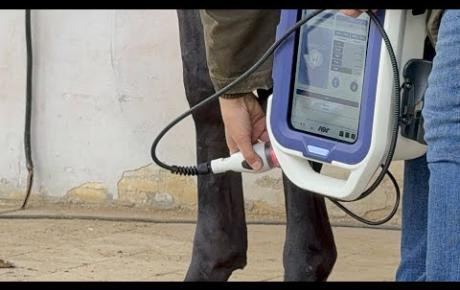Separation anxiety can have a serious impact on the wellbeing of pets, with an estimated 80-90% of cases going undiagnosed.[i] COVID-19 has exacerbated rates of separation anxiety in pets, especially as owners return to in-office work.[ii] In order to understand how to manage separation anxiety, it is important to understand its causes and symptoms.
Pet Separation Anxiety and Covid-19
A 2021 survey by Banfield Pet Hospital found that 47% of owners believed their pet developed separation anxiety within the year prior to the survey. Banfield hospitals also saw a 91% increase in cats and a 45% increase in dogs showing signs of anxiety since the beginning of the pandemic.[iii]
During the pandemic, families spent more time at home with their pets, working and attending school from home. Pets adapted to their families being home consistently and grew comfortable with new routines.[iv] With lockdowns and then a return to in-person work and school, pet’s routines have been drastically changed, leading to an emergence of separation anxiety, even for pets who never experienced it before.[v]
Symptoms
Common symptoms of separation anxiety in dogs include barking, chewing, destruction, digging, pacing, panting, urinating, defecating, and attempts to escape.[vi] These symptoms and behaviors tend to begin when the owners prepare to leave the house and can continue when the dog is left alone.[vii] The repetitiveness of such actions indicates that they are stress related, especially if these are behaviors the dog does not typically exhibit.[viii]
Cats share some overlap in symptoms of separation anxiety when compared to dogs, including destructive behavior and escape attempts. Additional symptoms include excessive meowing or crying, excessive self-grooming, eating too fast or not at all, urinating or defecating outside the litter box, vomiting, and unordinary excitement upon owner’s return home.[ix]
Causes
Separation anxiety can develop in both cats and dogs at any age. While there is a possibility that some dogs might have a hereditary predisposition, factors that contribute to the develop of separation anxiety can include being in a single-owner household, changes in family schedule and makeup, and daily extended periods of time separated from the owner.[x] Changes in a dog’s daily routine can also create separation anxiety.[xi] Dogs that are adopted from a shelter or rescued also have a predisposition to separation anxiety.[xii]
In cats, separation anxiety can be caused by noise, changes in lifestyle, owner or environment, and limited playtime or exercise. Separation anxiety can also be caused by exposure to stressful experiences during the key socialization period of 2 to 8 weeks old. Similar to dogs, some cats also have a genetic predisposition to separation anxiety.[xiii]
Managing Separation Anxiety
There are ways to manage separation anxiety in dogs, lessening the strain on both pets and owners.
One of the ways to manage separation anxiety from a young age is crate training. It is important to teach the dog to associate the crate with positive things such as long-lasting treats and toys.[xiv] Crate training helps to create a consistent and safe space for the dog where they feel comfortable.[xv] This not only helps the pet feel safe, but it can also help protect the furniture and house from anxiety induced destruction while owners are gone.
Another way to manage separation anxiety is through desensitization and counterconditioning. Desensitization refers to leaving a dog along from short periods of time and slowly increasing the length of alone time. This could begin by leaving the dog in a room alone while the owner is still in the house and working up to leaving the house entirely.[xvi] Another key part of desensitization is to change departure cues, such as the owner changing routines every time they leave the house. Counterconditioning can be a part of desensitization training, this can be achieved by giving a treat when leaving the house, showing there are rewards associated with separation. An example of this could be giving the pet a treat when picking up car keys or coat, creating a positive association with actions that typically mean the owner is leaving the house.[xvii]
Drug therapy can assist in calming and reducing anxiety. It is not a cure for separation anxiety, but rather a temporary solution.[xviii] There are various types of drug therapies available. Daily-use medicines for anxiety include Fluoxetine or Clomipramine – Trazadone can also be used as a daily or as needed medication. There are also sedatives that can be used to reduce distress when the owner is going to leave the dog alone.[xix] CBD oil can also be used to manage separation anxiety. The CBD oil increases serotonin levels, heling dogs to feel more comfortable and relaxed.[xx]
The interaction with the dog when returning home is just as important the routine for leaving the house. When returning home, it is important to not greet the dog with an abundance of emotion. This emotion creates the impression of separation being a major event which will increase the dog’s anxiety over such separation. It is also important to never punish the dog if owners return to accidents or damage as this can increase anxiety.[xxi]
While the above are techniques that can work for general separation anxiety there are a few action owners can take if they know they will be returning to in-office work soon. These actions could include increasing length of time pets spend alone, giving the pet a special treat that will keep them occupied while they are along such as a toy stuffed with treats. Lastly, it is important that owners adjust their schedule to one they will stick to once back to work, including when the pet will be taken for a walk.[xxii]
Like dogs, separation anxiety in cats can be managed through practicing short absences, desensitization, and medication. Additional management techniques include increasing playtime and providing cat trees and perches. Providing cat trees and perches allows cats to feel secure while owners are away as it gives them a birds-eye view. Puzzle feeders or puzzle toys can also be used to manage separation anxiety, similar to giving treats to dogs, these puzzles take the cats attention off of the absent owner and help the cat focus on something else.[xxiii]
Separation anxiety in pets does not have to impact the owner’s social and work life. Once it is known that a pet is struggling with separation anxiety, management techniques can be implemented to help the pet become more comfortable spending time alone. With people going back to the office and school in a post-pandemic world. These strategies are becoming even more crucial to help pets readjust to spending time alone.



